What Is a Go-to-Market Strategy? Your Ultimate Guide to a Killer Product Launch
what is a go to market strategy: You’ve done it. After countless late nights, gallons of coffee, and maybe a few moments of wanting to throw your comput — learn
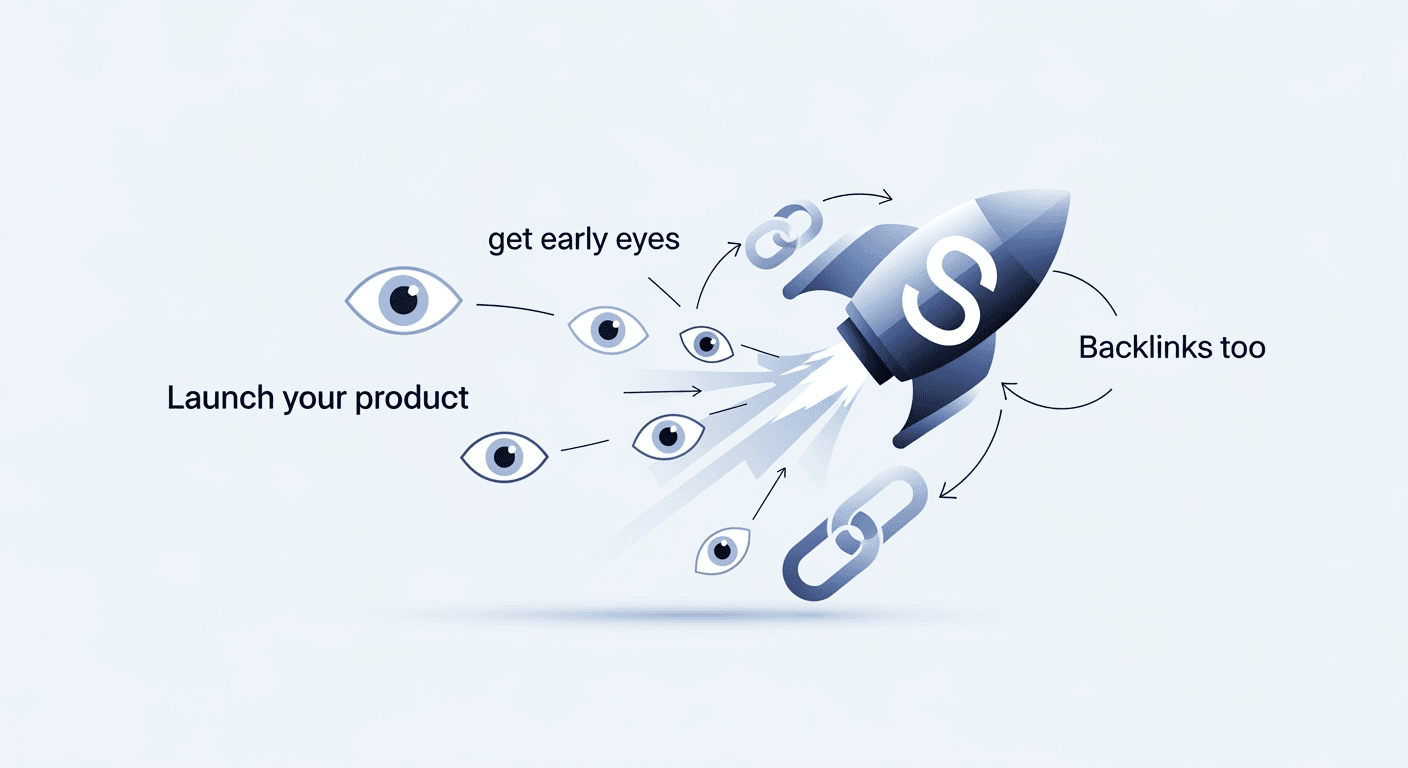
You’ve done it. After countless late nights, gallons of coffee, and maybe a few moments of wanting to throw your computer out the window, you’ve built something you’re proud of. A product. An app. A service. It’s polished, it works, and you’re ready to show it to the world.
But then… crickets.
This is the silent fear of every indie maker, startup founder, and solo builder. You can build the most brilliant product, but if no one knows it exists, does it even matter? This is precisely where understanding what is a go-to-market strategy becomes not just important, but absolutely essential. Forget thinking of it as a stuffy corporate document; it’s your roadmap from "I built a thing" to "I have a thriving business."
This guide will break down exactly what a go-to-market strategy is, why you can't afford to launch without one, and how to build a lean, effective plan—especially if you're starting with zero audience and an even smaller budget.
Table of Contents
- What Is a Go-to-Market (GTM) Strategy, Really?
- Why You Can't Afford to Ignore Your GTM Strategy
- The Core Components of a Winning Go-to-Market Strategy
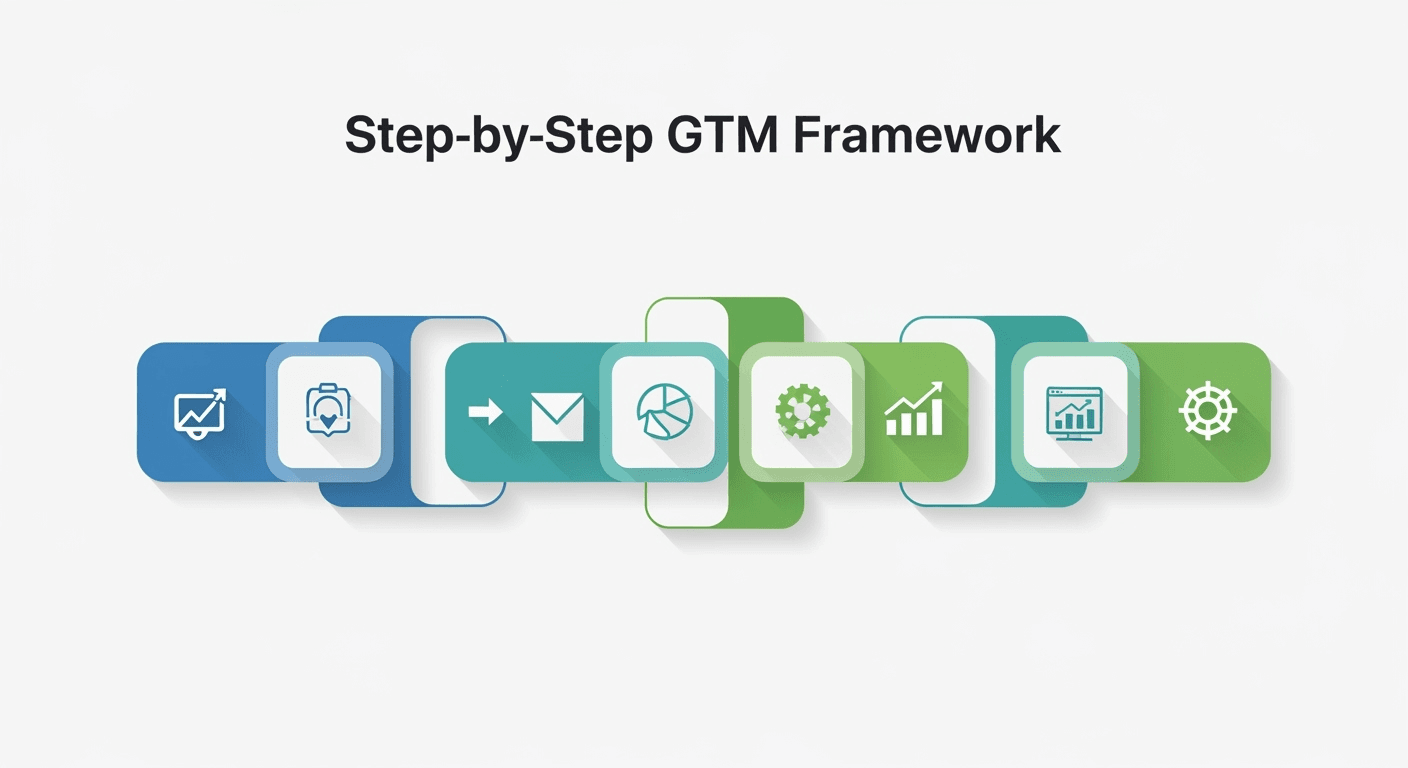
- Real-World Examples: Go-to-Market Strategies in Action
- Case Study 1: The SaaS Tool That Nailed Its Niche
- Case Study 2: The E-commerce Brand That Built a Community
- Common GTM Pitfalls and How to Avoid Them
- What Is a Go-to-Market Strategy for an Indie Maker? A Special Look
- Conclusion: Your Launch Is Just the Beginning
- Recommended Videos
- Frequently Asked Questions (FAQs)

What Is a Go-to-Market (GTM) Strategy, Really?
Let’s cut through the jargon. A go-to-market (GTM) strategy is a comprehensive action plan for how a company will launch a new product or service into the market. Think of it as a detailed blueprint that answers a few critical questions:
- WHO are you selling to? (Your target audience)
- WHAT are you selling, and why should they care? (Your value proposition and messaging)
- WHERE will you find your customers? (Your marketing and distribution channels)
- HOW will you convince them to buy? (Your marketing and sales tactics)
It’s not just a marketing plan. A marketing plan focuses on campaigns and promotions to create demand. A GTM strategy is broader; it’s the entire playbook that aligns your product, sales, and marketing efforts to achieve a competitive advantage from day one. It’s the connective tissue that ensures you’re not just building a product, but building a business around that product.
For an early-stage founder, this plan might not be a 50-page document. It could be a simple, one-page outline. The format doesn’t matter as much as the thinking behind it. It's about being intentional instead of just hoping for the best.

Why You Can't Afford to Ignore Your GTM Strategy
It’s tempting to skip the planning phase and jump straight to launching. You’re excited, and you want to see your product in the wild. But launching without a plan is like setting sail without a map or a compass. You might move, but you probably won’t end up where you want to be.
The data on this is painfully clear. According to research by CB Insights, a staggering 35-42% of startups fail because they build something with "no market need". This is the number one startup killer, and it's a problem a solid GTM strategy is designed to prevent.
Here’s why it’s non-negotiable:
- It Reduces Risk: A GTM strategy forces you to validate your assumptions before you invest significant time and money. By researching your market and talking to potential customers, you confirm that the problem you're solving is one people actually have—and are willing to pay to fix.
- It Provides Clarity and Focus: When you have limited resources, you can't be everywhere at once. Your GTM plan helps you pinpoint the most effective channels and messages, ensuring your efforts are concentrated where they'll have the biggest impact.
- It Aligns Your Team (Even if Your Team is Just You): It ensures that every decision—from product features to blog posts—is aligned with the same goal: reaching and serving your target customer.
- It Sets You Up for a Stronger Launch: A well-planned launch builds momentum. It’s the difference between a firework show and a damp squib. You get early feedback, initial users, and crucial social proof that you can build on.
Let's be real, you're competing for attention in a very crowded world. A thoughtful go-to-market strategy is your secret weapon to cut through the noise.
The Core Components of a Winning Go-to-Market Strategy
So, what actually goes into this plan? While it can get complex, a powerful GTM strategy boils down to four core pillars.
1. Defining Your Target Audience (The "Who")
This is the foundation of your entire strategy. If you get this wrong, everything else will be a struggle. "Everyone" is not a target audience. You need to get hyper-specific.
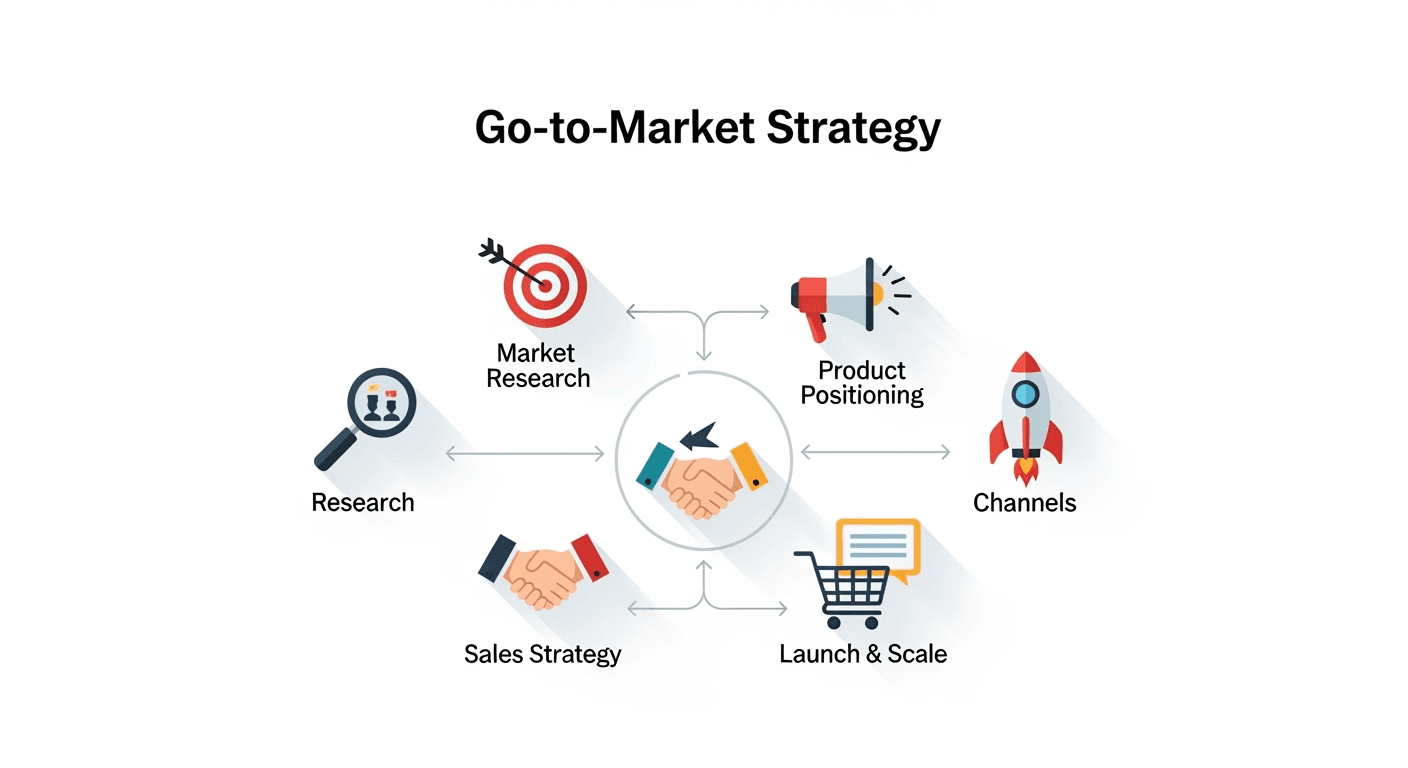
- Pain Points: What specific frustrations are they dealing with every day? What keeps them up at night? For screen-sharing software company Upscope (https://upscope.com/), the pain point wasn't just screen sharing; it was the hassle of setting it up for non-technical customers.

- Goals and Aspirations: What are they trying to achieve? What does success look like for them?
- "Jobs to Be Done": What "job" are they hiring your product to do? People don't buy a drill because they want a drill; they buy it because they want a hole in the wall.
- Where They Hang Out: What blogs do they read? Which social media platforms do they use? Are they in specific Slack communities, subreddits, or forums?
What I'd tell a friend: Before you write a single line of code for a new feature, talk to at least 10-20 people who you think are your ideal customers. Listen to the exact words they use to describe their problems. Those words are your marketing gold.
2. Crafting Your Value Proposition & Messaging (The "What" and "Why")
Once you know who you're talking to, you need to figure out what to say. Your value proposition is a clear, compelling statement that explains the benefit you provide and how you're different from the competition.
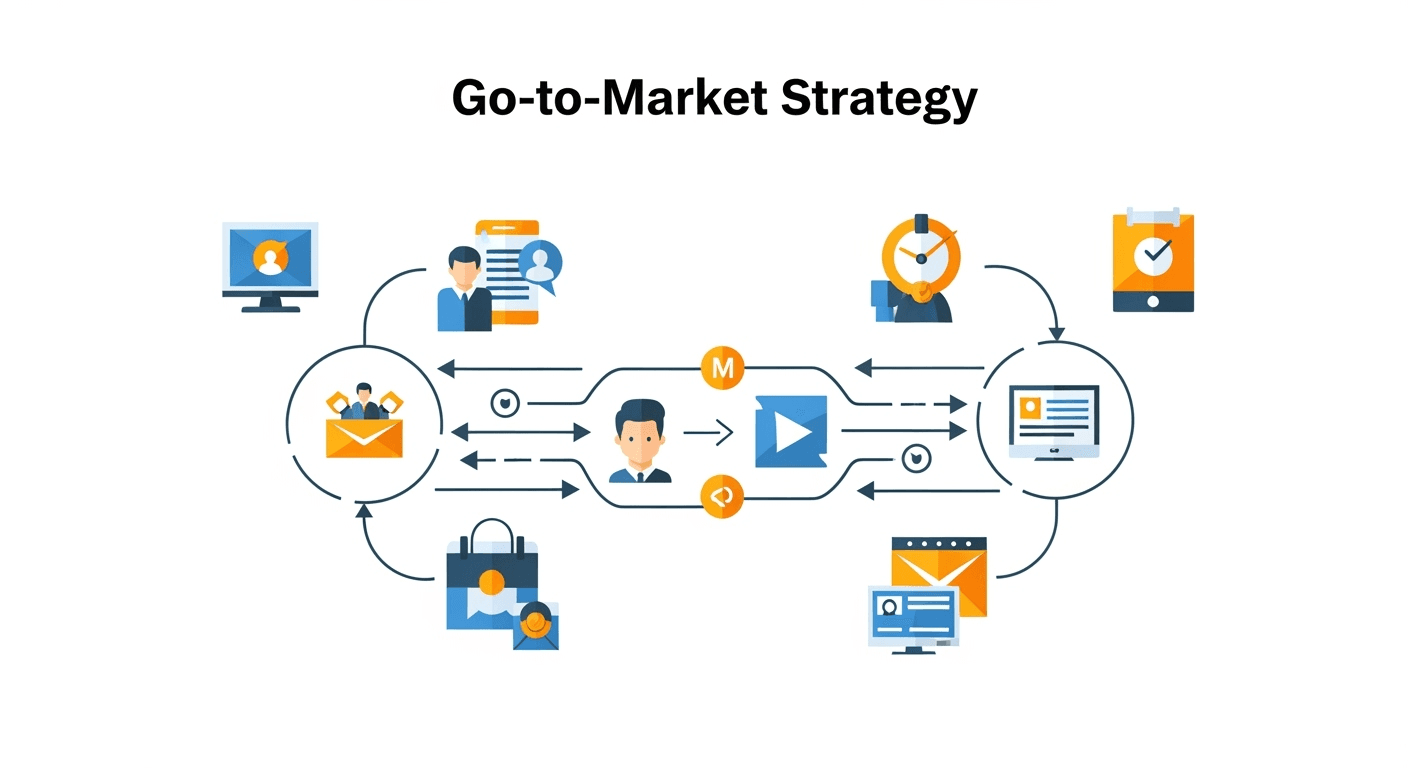
We help [Target Audience] to [Achieve a Desired Outcome] by [Doing Something Unique].
For example, for ShipSquad, it might be: "We help indie makers get early traction by providing a free platform to launch, get feedback, and earn quality backlinks."
Your messaging should be an extension of this value proposition. It needs to be:
- Clear, not clever: Avoid jargon. Use the language your customers use.
- Benefit-oriented: Don't just list features. Explain how those features make your customer's life better.
- Differentiated: Why should they choose you over a competitor, or over doing nothing at all? TaxJar (https://www.taxjar.com/), for example, didn't position itself as just another tax company; it launched as a technology company first, focusing on a better product experience.
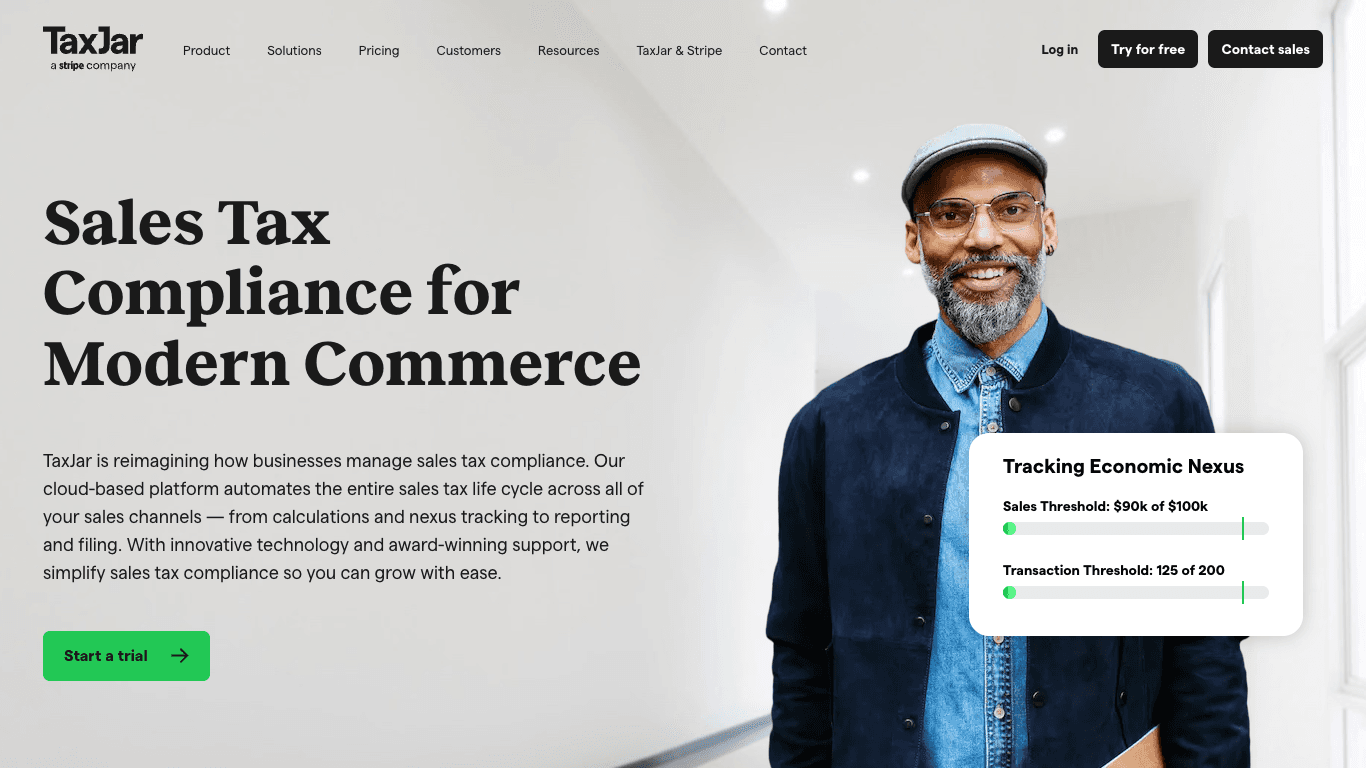
3. Choosing Your Pricing Strategy (The "How Much")
Pricing is a critical part of your GTM strategy because it directly communicates value. Your pricing model needs to align with your target audience and the value you provide.
Common models for early-stage products include:
- Freemium: Offer a basic version for free to attract a large user base, with the option to upgrade for premium features. This is a powerful strategy used by companies like Slack (https://slack.com/) and Canva (https://www.canva.com/) to drive adoption. The "free" tier acts as your biggest marketing engine.

Get our free checklist: Improve your group's communication in 10 minutes.
Download now to reduce friction and talk more naturally.
- One-Time Purchase: Customers pay once for lifetime access. This is simpler but doesn't create recurring revenue.
- Usage-Based: Price is based on how much the customer uses the product (e.g., per API call, per gigabyte of storage).
Your pricing isn't set in stone. It's a hypothesis you should test and iterate on as you learn more about your customers' willingness to pay.
4. Selecting Your Marketing & Sales Channels (The "Where")
This is where you figure out how to actually reach your audience. The key is to go where your customers already are, instead of trying to pull them to you.
For indie makers and startups on a budget, low-cost, high-leverage channels are your best friends:
- Content Marketing: Creating valuable blog posts, guides, or videos that solve your audience's problems. This builds trust and attracts users through SEO over time.
- Community Engagement: Actively participating in online communities where your ICP hangs out (e.g., Reddit, Indie Hackers, specific Facebook groups). This isn't about spamming your link; it's about being genuinely helpful.
- Product-Led Growth: Using the product itself as the primary driver of acquisition. A freemium model or a free trial is a classic product-led GTM motion.
- Launch Platforms: Leveraging platforms designed to give new products visibility. Getting featured on sites like Product Hunt can provide a massive initial boost, but what about sustained growth? This is a gap where platforms focused on long-term value, like SEO backlinks, can make a huge difference.

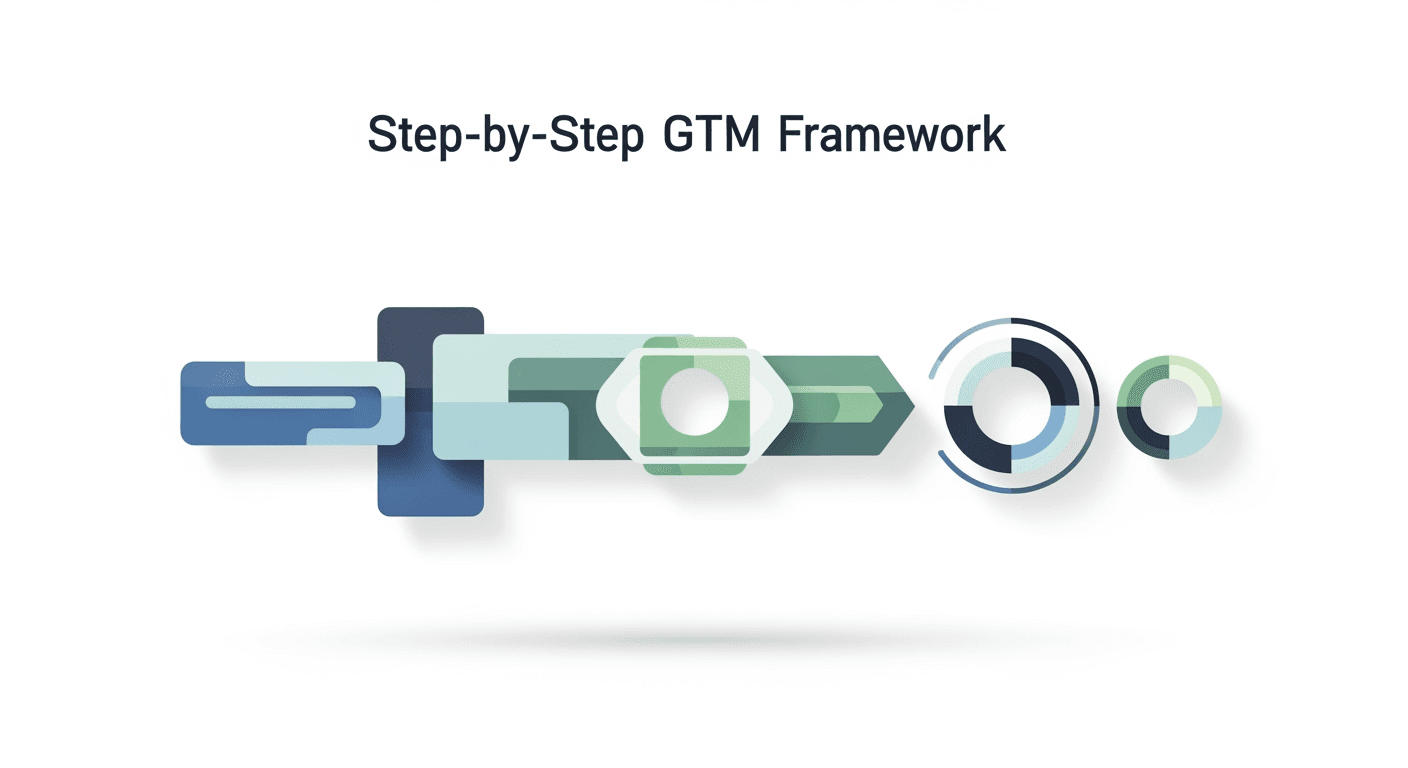
Feeling overwhelmed? Don't be. Here’s a simplified, actionable process to build your first go-to-market strategy.
- Start with the Problem: Before anything else, clearly articulate the "hair-on-fire" problem you are solving. Write it down in one sentence.
- Identify Your ICP: Who feels this pain most acutely? Get specific. Create a mini-persona document.
- Analyze the Market & Competition: Who else is trying to solve this problem? What are their strengths and weaknesses? Find your unique angle.
- Define Your Core Message: Craft your value proposition. What makes you the best choice for your ICP?
- Choose Your Primary Channels: Pick 1-2 marketing channels to focus on initially. You can't do everything. If your audience is on Twitter, master Twitter. If they search on Google, focus on SEO-driven content.
- Set Your Launch Goals: What does a successful launch look like? Is it 100 new users? 10 paying customers? Your first 1,000 website visitors? Set clear, measurable KPIs.
- Create a Simple Launch Plan: Outline the sequence of actions. For example:
- Week 1-2: Announce you're building in public on Twitter and Indie Hackers.
- Week 3: Share a sneak peek and start collecting emails for a waitlist.
- Week 4: Launch on a discovery platform to get initial eyes and feedback.
- Post-Launch: Engage with every single user, gather testimonials, and start building out your primary content channel.
This plan is your guide, not a rigid set of rules. Be prepared to learn and adapt as you go.
Real-World Examples: Go-to-Market Strategies in Action
Theory is great, but let's see how this works in practice.
Case Study 1: The SaaS Tool That Nailed Its Niche
- The Scenario: A solo developer built a simple invoicing tool specifically for freelance writers.
- The Challenge: The market was flooded with complex accounting software like QuickBooks and FreshBooks. How could a one-person shop compete?
- The GTM Strategy: Instead of going broad, they went hyper-niche.
- Audience: Freelance writers, not all freelancers.
- Messaging: "The invoicing tool that understands writer-specific needs, like tracking words, projects, and publication rights."
- Channels: They didn't buy ads. They became an active, helpful member of freelance writing subreddits and Facebook groups. They wrote detailed blog posts like "How to Set Your Freelance Writing Rates" and "5 Clauses Every Writer Needs in Their Contract."
- The Outcome: By focusing intensely on a small, underserved niche, they built a loyal following. They reached their first 500 paying customers within six months, with a customer acquisition cost near zero, driven almost entirely by community engagement and content marketing.
Case Study 2: The E-commerce Brand That Built a Community
- The Scenario: A founder wanted to launch a brand of sustainable, ethically sourced coffee.
- The Challenge: The coffee market is incredibly crowded and dominated by huge players.
- The GTM Strategy: They decided their differentiator wasn't just coffee; it was their story and values.
- Audience: Eco-conscious millennials who care about supply chain transparency.
- Messaging: "Great coffee that does good. Every bag tells the story of the farmer who grew it."
- Channels: They focused heavily on Instagram, sharing beautiful photos and videos of the farms and farmers. They partnered with micro-influencers in the sustainability space and ran a pre-launch giveaway to build an email list.
- The Outcome: They built an email list of over 5,000 engaged subscribers before their first product was even ready to ship. When they launched, they sold out their initial batch in under 72 hours, proving the power of a community-first approach.
| Feature | Traditional Launch | Community-First Launch |
|---|---|---|
| Initial Cost | High | Low |
| Speed to Validation | Slow | Fast |
| Feedback Quality | Variable / Indirect | High / Direct |
| Long-Term SEO Impact | Low | High |
| Customer Loyalty | Transactional | Advocate-Driven |
| Primary Channels | Paid Ads, PR | Content, Forums, Social |
| Initial Risk | High (Big Bet) | Low (Iterative) |
| Pre-Launch Momentum | Low | High |
| Scalability | Fast (with budget) | Slower (organic) |
| *** |
Common GTM Pitfalls and How to Avoid Them
Even with a plan, things can go wrong. Here are a few common traps to watch out for:
- Solving a Problem No One Has: This is the big one. The only way to avoid it is to talk to users early and often. Fall in love with the customer's problem, not your solution.
- Vague Messaging: If you can't explain what you do and why it matters in one simple sentence, your audience won't get it either.
- Being a Ghost Post-Launch: The launch is the starting line, not the finish line. Many founders disappear after the initial push. You need a plan to engage with early users, gather feedback, and keep the momentum going.
- Ignoring SEO: Many builders focus on short-term launch spikes from social media or platforms like Product Hunt. They forget that sustainable, long-term growth often comes from organic search. Getting credible backlinks from day one is a massive advantage that many overlook.
What Is a Go-to-Market Strategy for an Indie Maker? A Special Look
If you're a solo builder or a small team, the idea of a "go-to-market strategy" might still sound intimidating. But for you, it's even more crucial, and it looks a little different.
A lean GTM strategy for an indie hacker focuses on low-cost, high-impact activities:
- Building in Public: Share your journey, your progress, and your challenges on platforms like Twitter or Indie Hackers. This builds an audience and a support system before you even launch.
- Leveraging Communities: Don't just post your link. Become a valued member of a community. Answer questions, give feedback, and build relationships.
- Prioritizing Early Feedback: Your first 10 users are more valuable for their feedback than their revenue. You need a way to get your product in front of them easily.
- Thinking About SEO from Day Zero: Every mention, every link, every testimonial counts. Launching on a platform that not only gives you visibility but also provides a valuable backlink can be a game-changer for your long-term discoverability.
This is where the idea for ShipSquad was born. Traditional launch platforms are great for a one-day spike, but what about the day after? And the day after that? Early-stage builders need three things: initial visibility, quality feedback, and a foundation for long-term SEO growth. A platform that provides all three without fees is designed to solve the core GTM challenges for the indie community.
Get our free checklist: Improve your group's communication in 10 minutes.
Download now to reduce friction and talk more naturally.
Conclusion: Your Launch Is Just the Beginning
So, what is a go-to-market strategy? It's your deliberate, thoughtful plan to connect the product you've poured your heart into with the people who need it most. It’s the bridge between building and business.
It doesn’t have to be complicated. It just has to be intentional. By understanding your audience, nailing your message, and choosing the right channels, you dramatically increase your odds of success. You move from "I hope this works" to "Here's how I'm going to make this work."
And for indie makers launching their first product, getting that initial traction is everything. You need eyes on your work, feedback from real users, and the SEO credibility to grow beyond launch day. Don't just launch your product; give it the strategic start it deserves.
Ready to get your product the early eyes and backlinks it needs? Check out ShipSquad — it’s free to launch and designed for makers like you.

Recommended Videos
- How to Create a Go-To-Market Strategy | Brian Balfour
- Go-To-Market Strategy: The Key to a Successful Product Launch
Frequently Asked Questions (FAQs)
1. What's the difference between a marketing plan and a go-to-market strategy?
A marketing plan is a component of a go-to-market strategy. The GTM strategy is a broader plan that covers everything from pricing and distribution to sales and customer support, all centered around a specific product launch. A marketing plan focuses specifically on the campaigns, content, and promotions to reach and persuade customers.
2. How long does it take to create a GTM strategy?
It can range from a few days to several weeks. For an indie maker, you can create a lean, effective one-page GTM plan in a single afternoon. The key is not the time spent writing it, but the quality of the research and thinking that goes into it.
3. Can I launch without a go-to-market strategy?
You can, but it's incredibly risky. Launching without a GTM strategy is like guessing. You're throwing your product into the market and hoping the right people find it and understand it. A GTM strategy replaces that hope with an intentional plan.
4. How do I measure the success of my GTM strategy?
Success is measured against the goals you set. Key performance indicators (KPIs) could include the number of new sign-ups, conversion rate from visitor to user, customer acquisition cost (CAC), revenue generated, or the volume of user feedback received.
5. What is the most important part of a go-to-market strategy?
Deeply understanding your target customer. If you know who your customer is, what they care about, and where they spend their time, every other part of your strategy becomes infinitely easier and more effective.
6. How can I get early feedback and visibility for my product launch without a big budget?
Focus on low-cost, high-leverage activities. Engage genuinely in online communities, build in public on social media, create valuable content, and use free launch platforms. Look for platforms that offer more than just a temporary spike in traffic, such as those that also provide valuable SEO backlinks to help with long-term growth.